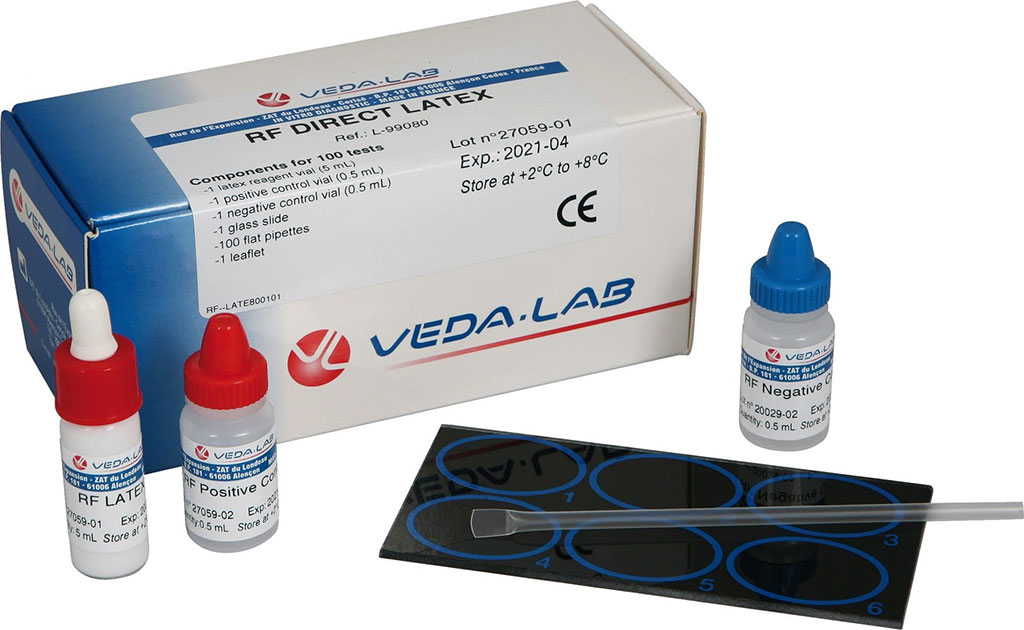Regulatory and Other Rheumatoid Factors Analyzed in RA Patients
By LabMedica International staff writers
Posted on 06 Jan 2022
Rheumatoid arthritis (RA) is a long-term autoimmune disorder that primarily affects joints. It typically results in warm, swollen, and painful joints. Pain and stiffness often worsen following rest. Most commonly, the wrist and hands are involved, with the same joints typically involved on both sides of the body.Posted on 06 Jan 2022
Despite numerous studies, the only properties definitively established for rheumatoid factor (RF) are that RF is an antibody to the Fc portion of modified IgG, and that elevated RF levels are a diagnostic marker for RA. Both the mechanisms by which RF level is elevated in autoimmune and infectious diseases and the role that RF plays in healthy and disease states remain speculative.

Image: The RF direct latex test for the detection of rheumatoid factor (RF) in serum (Photo courtesy of VedaLab)
Immunologists at the Udmurt State University (Izhevsk, Russian Federation) studied a total of 32 patients with an established diagnosis of rheumatoid arthritis. Of those, 22 patients had high to moderate rheumatoid arthritis activity. Several of the patients had systemic manifestations, such as anemia, rheumatoid nodules, Sjögren's syndrome. The duration of disease in the sample of RA patients studied was 2 to 20 years, with a mean of 8 ± 5.9 years and 35% of patients were receiving combination therapy.
The RF direct latex test (VedaLab, Alençon, France) was used to detect rheumatoid factor in the sera of arthritis patients. The regulatory rheumatoid factor (regRF) titer was determined in an agglutination test using human IgG-loaded tanned human erythrocytes. RegRF depletion from rheumatoid arthritis sera was also performed. Lyophilized human IgG was used to prepare an agglutination test system for detecting regRF. Size exclusion chromatography was performed using a Sephacryl S 100 26/400 column (Cytiva, Marlborough, MA, USA). A Genesys 10S UV-Vis Spectrophotometer (Thermo Fisher Scientific, Waltham, MA, USA) was used for the analysis.
The investigators reported that patients in remission had regRF levels higher than in healthy subjects. The regRF in remission was characterized by tight binding to its antigen, as in healthy subjects. The regRF levels in patients with active RA varied dramatically, and regRF binding to its antigen was weak. The exacerbation of Still's disease coincided with low regRF levels and affinity, while an improvement in patient condition was associated with an increase in regRF levels and affinity. The RF specific to RA, which was detected by the RF latex-fixation method, was a nonhomogeneous population of antibodies that included RF to lyophilized IgG, to IgG immobilized on polystyrene, and to rabbit IgG.
The authors concluded the RA remission is associated with an increase in regRF levels and affinity. Results of an analysis of a clinical case of Still's disease were consistent with the results obtained when patients with active rheumatoid arthritis were compared with those in remission. The study was published on December 24, 2021 in the Journal of Clinical Laboratory Analysis.
Related Links:
Udmurt State University
VedaLab
Cytiva
Thermo Fisher Scientific













